This use case regards open cultural sites that can be scanned with aerial drones.
The first-round demo was instantiated with the 3D model of the Palace of Aigai. In this first demo, the user can wonder around in the ruins of the ancient palace of Aigai, and reconstruct the frontal-face of the Palace from pillar pieces lying on the ground. An ancient crane, known also as “Trispastos”, was implemented that allows to lift pieces and place them to the correct position in the front face of the palace. The demo was instantiated with (a) the 3D CAD architectural model that stemmed from the archaeological studies as shown in Figure (a) that regard the 300 B.C. version of the Palace namely it is a 3D model of the Palace made with 3DS max software based on the findings of the archaeological excavations during several decades; and (b) in a second level, the user can wonder around in the 2016 A.C. “DigiArt” version which is the 3D model reconstructed from the aerial scans that happened due to DigiArt project. It contains the ruins of the palace, partial reconstructions on the site, and the surrounding terrain as shown in Figure (b) .
Points of Interest (PoIs) are represented by a glowing sphere. By clicking on them, the player can retrieve the hidden information. The media in the PoIs shall have been text, images and videos. Every time, the player interacts with the virtual environment and its assets, is rewarded by some experience points. The experience indicator is on the top-left corner of the screen and it reflects the total progress.
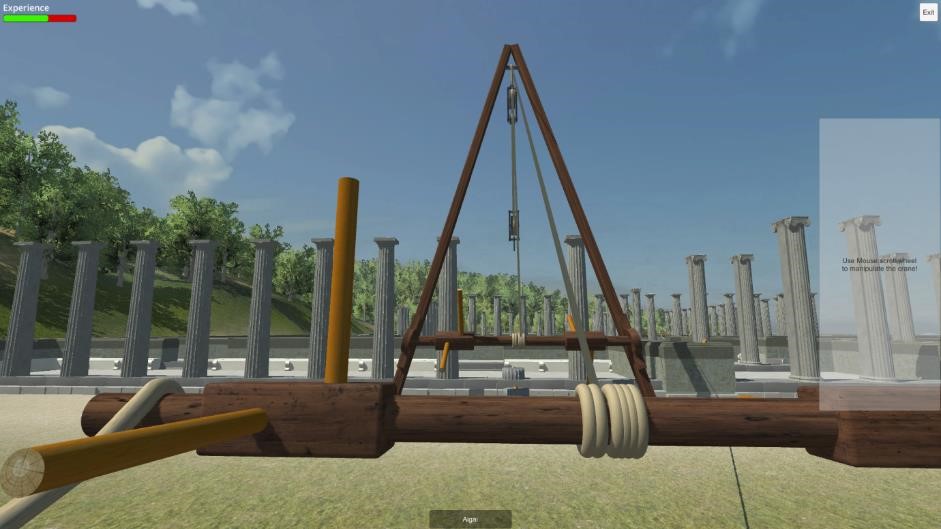
(a) 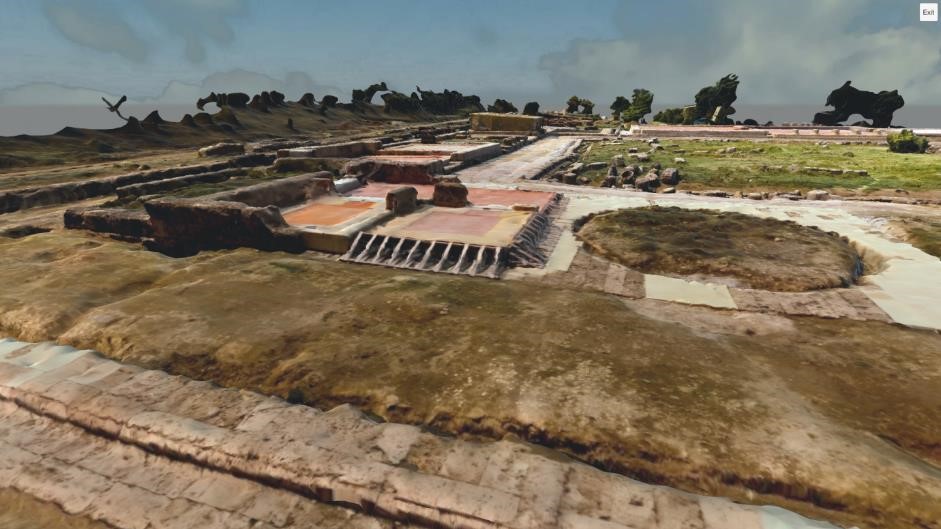
(b)
Experience the initial version of the Palace of Aigai experience
The virtual experience is under copyright by the Ephorate of Vergina where the Palace of Aigai belongs to. Please email to ververid at iti dot gr in order to communicate with you.
Final Version of the experience
In the final version of the Palace of Aigai virtual experience we made radical changes. The archaeologists reconsidered the concept idea. It was suggested to focus only in the facial side of the Palace of Aigai, as this would be more aligned with the context of the New Polycentric Museum in Vergina. In collaboration with the archaeologists, DigiArt team suggested a scenario that would serve all the user requirements and scientific restrictions. We redesigned the scenario and the storyboard, trying to combine the produced data, 3D models (scanned, designed, and from Ephorate’s deposit), in an educational context. The main idea is the installation of a virtual exhibition for the façade of Palace of Aigai. The user interacts into an architectural office, retrieving information through archaeological records and the scope of the experience is to settle a collection of different architectural parts that consists the entrance of the Palace.
More specifically, user can learn about the structural components from the eastern side of the Palace, gaining information about their code name, a short description provided by a text, and a collection of images from different perspectives or viewports, for each one. With this approach, we scope in presenting the current situation of the selected parts. Thus, all the damage to objects is impressed by the influence of time and human activity. In a next level, user has the opportunity to play a mini-game using the architectural blueprint of the façade of the Palace of Aigai, aiming to match the accurate position of each part. Player’s selection is assisted by predefined positions. The textual and visual information, gained in previous step, helps player to select easily the correct position. Detail of the virtual experience are shown in the Figure below.
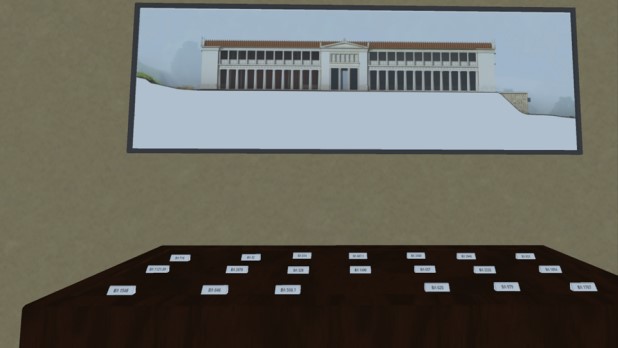
(a) 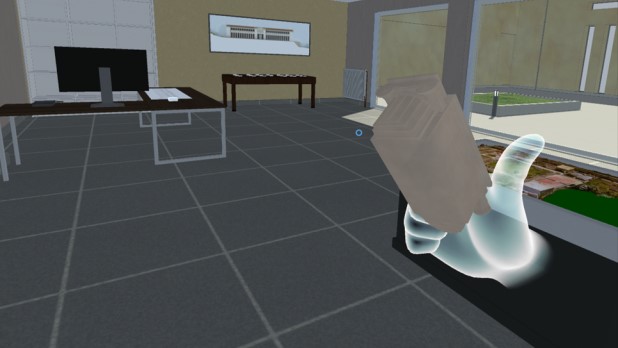
(b) 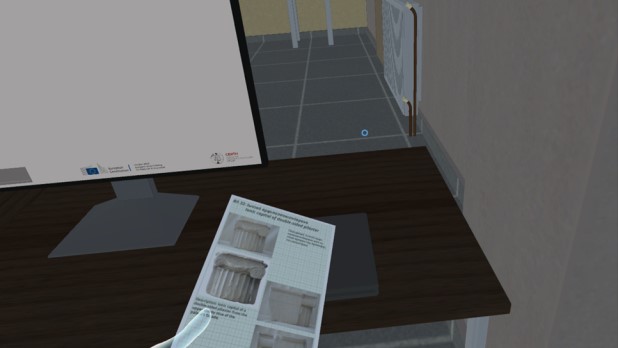
(c) 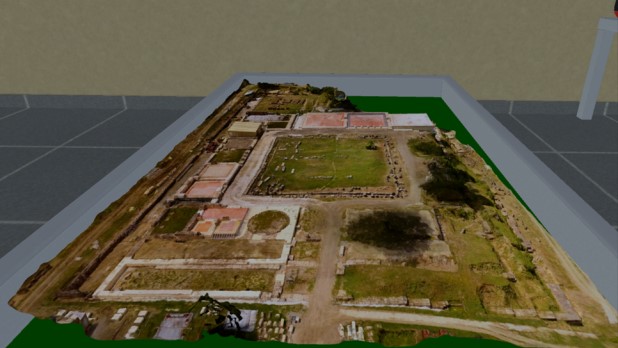
(d)
The renewed palace of Aigai experience: (a) labels of the parts of the front face of the palace; (b) grasping parts of the front-face; (c) reading instructions for each part; (d) inspecting the palace of Aigai 3D reconstructed model.
As a reward, our gamification offers the possibility to print the specific part of the Palace in three dimensions, using a virtual 3D printer, which is placed into the virtual environment. The user can grab it with a natural way, using his/her virtual hands and examine all the details of each part, as it was during the construction of the Palace of Aigai, in 4th century B.C. Finally, user has to place the 3D printed artifact in the correct position, on the exhibition table. This procedure can be executed for the 20 parts of the façade. The more the user plays, the more information and rewards he/she gains. In addition, we have embedded the 3D-scanned textured model of the archaeological site of the Palace of Aigai, into the architectural office, as a 3D maquette, placed on a table. User can examine in details the current situation of the site.
Download and play the final version of the virtual experience of Aigai
The virtual experience is under copyright by the Ephorate of Vergina where the Palace of Aigai belongs to. Please email to ververid at iti dot gr in order to communicate with you.
